Hello! My name is Roving Climber and I’m a SBC / mini-ITX addict. If you’re reading this you might have the same problem. Symptoms can include a news-feed packed with single-board computers, a collection of every Raspberry Pi ever made, and quite possibly one or more ASRock mini-ITX boards in your possession.
I’ve built stuff around the ASRock J4125 in the past, it’s an incredible board for a low-power x86 build, and I also have an ASRock J5040 running as my Proxmox Backup Server. Last year the N100DC-ITX came out and I just had to grab one. The stats from CPUBenchmark looked pretty promising … nearly twice as much processing power for a lower TDP. As we all know TDP is a pretty meaningless number these days, but definitely worth a look.
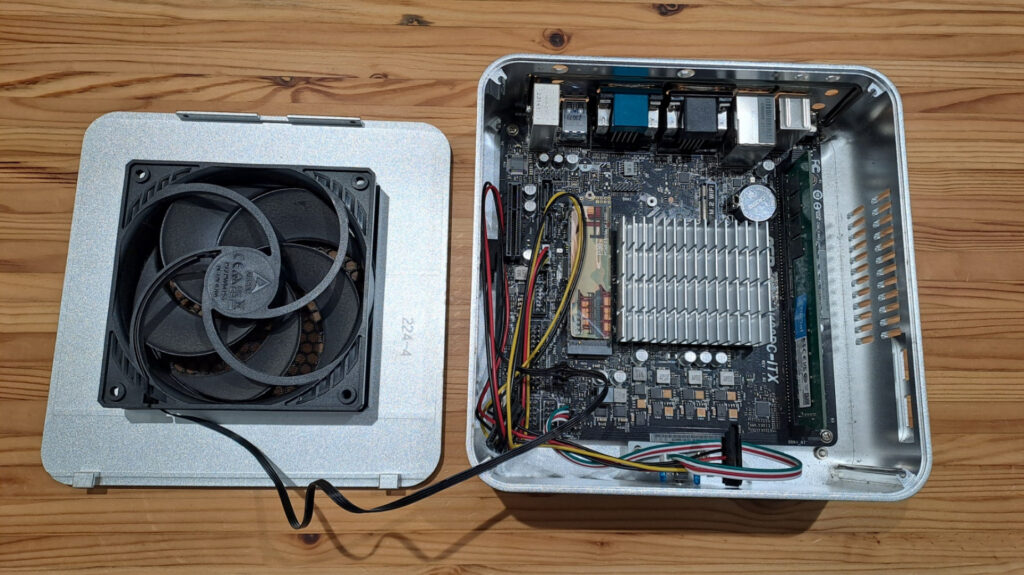
Here’s the board stuffed into my kinda DIY butchered mini case. The CPU is soldered in and comes with a heatsink pre-installed. I’ve chucked a 32Gb stick of RAM in there and a SSD that was left over after upgrading my CWWK Crazy.
While it’s a standard mini-ITX form factor, this board has a special trick. If you look closely you’ll see there are no power headers on the board. In fact the N100DC-ITX has a barrel power connector on the back and takes direct 19V DC in from a standard laptop power brick.
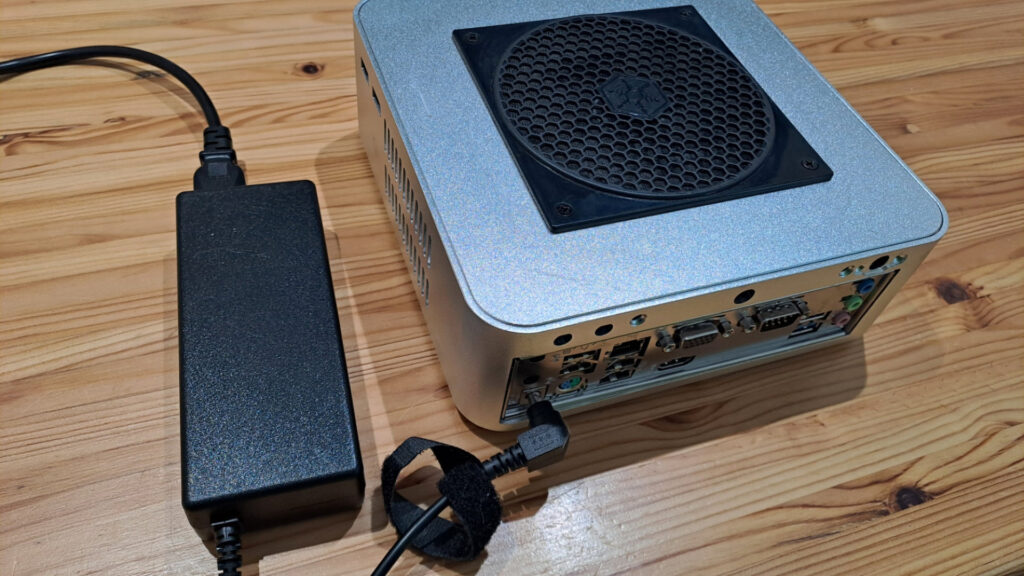
That in itself is pretty cool, because a lot of the time for these mini-ITX boards I would be using a PicoPSU anyway, so having that onboard is a tidy solution. You get power headers straight off the board to power SATA hard drives.
So let’s get this thing built!
Now my desk is already full of junk, so I’m going to use a PiKVM setup to build this remotely. I’m also going to run the box off a Salus SP600 smart plug which gives me both remote power control and also power monitoring so we can see how much juice this board drinks.
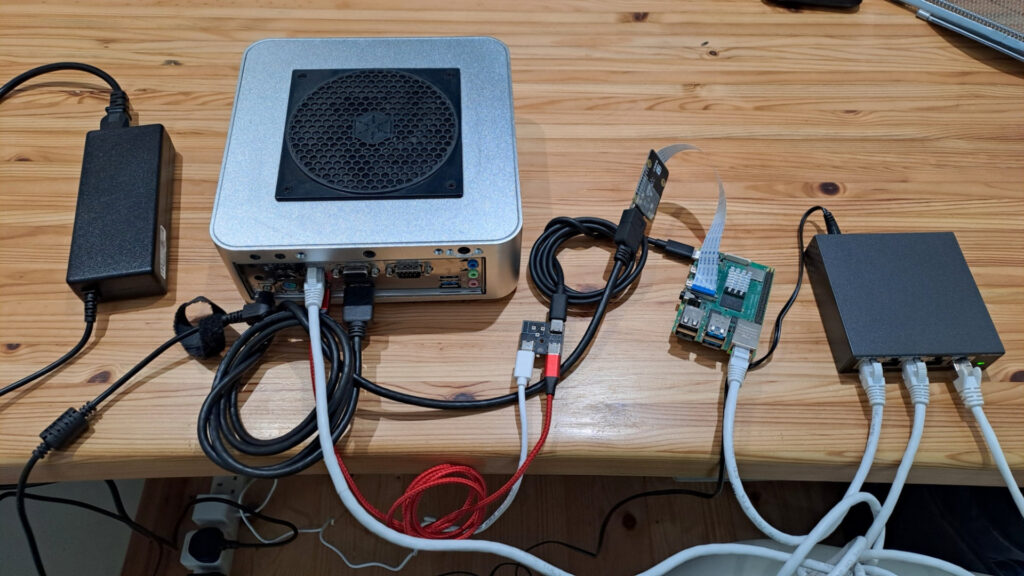
Now, if you’re using the default PiKVM setup, the default resolution (defined over EDID to the connected PC) is 1280×720. That doesn’t play very well with the UEFI BIOS or the Proxmox GUI installer, so it’s easiest to switch it to 1080p before you start.
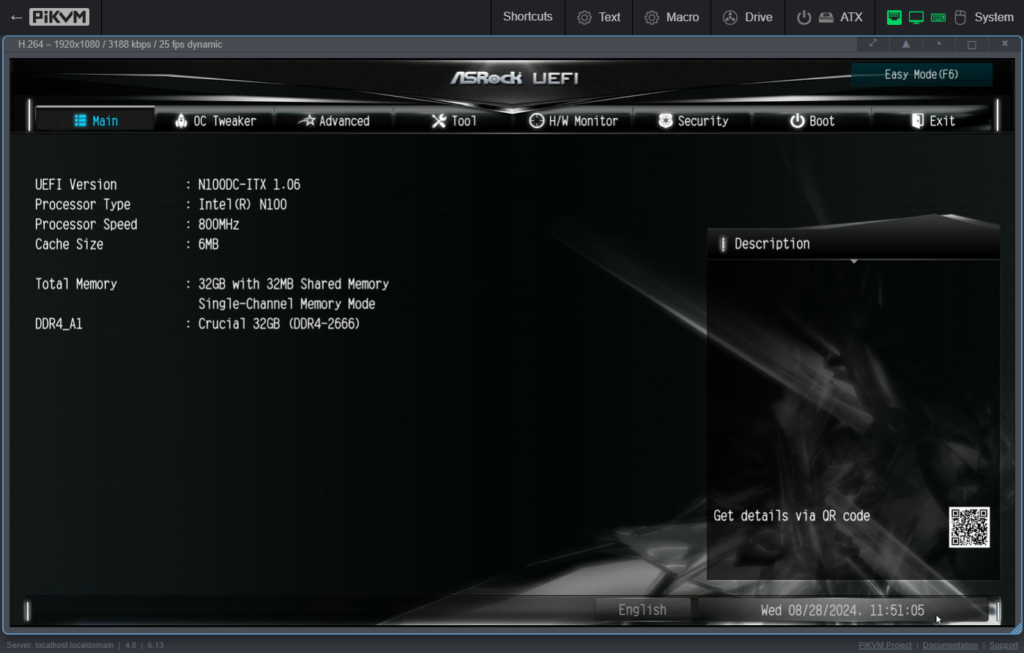
First thing to do is make sure that virtualization is turned on, should normally be on by default:

I’ll probably want to use Wake-on-LAN at some point so let’s make sure that’s enabled:
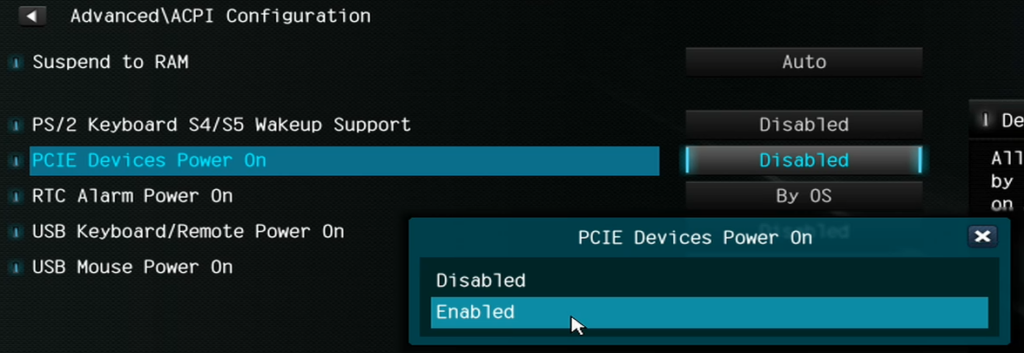
If you plan to use VT-d to share PCIe device[s] between VMs make sure that’s switched on also (although in my experience it’s not a reliable solution and most of the time you’re better off doing the same thing in LXC which is a much better way to share resources like GPU):

I’d also advise changing Restore on AC/Power Loss to enabled, this makes sure that the box starts automatically if there is a power outage, which also gives you the ability to hard reset via the smart switch without having to press the power button:

Now in PiKVM let’s mount the ISO for Proxmox installer:

Reboot and hit F11 on start to bring up the boot menu:
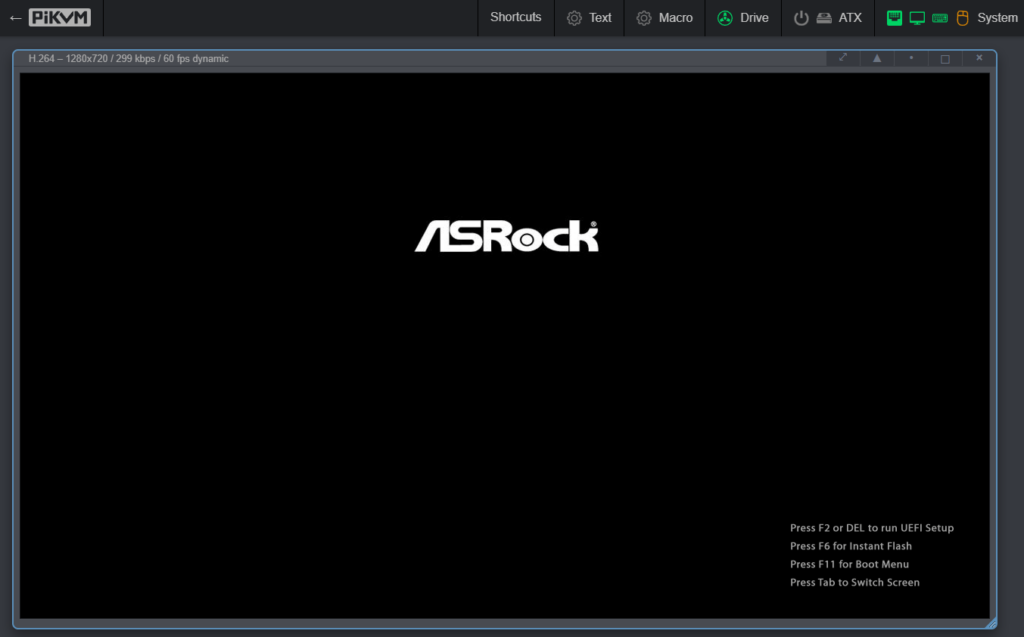

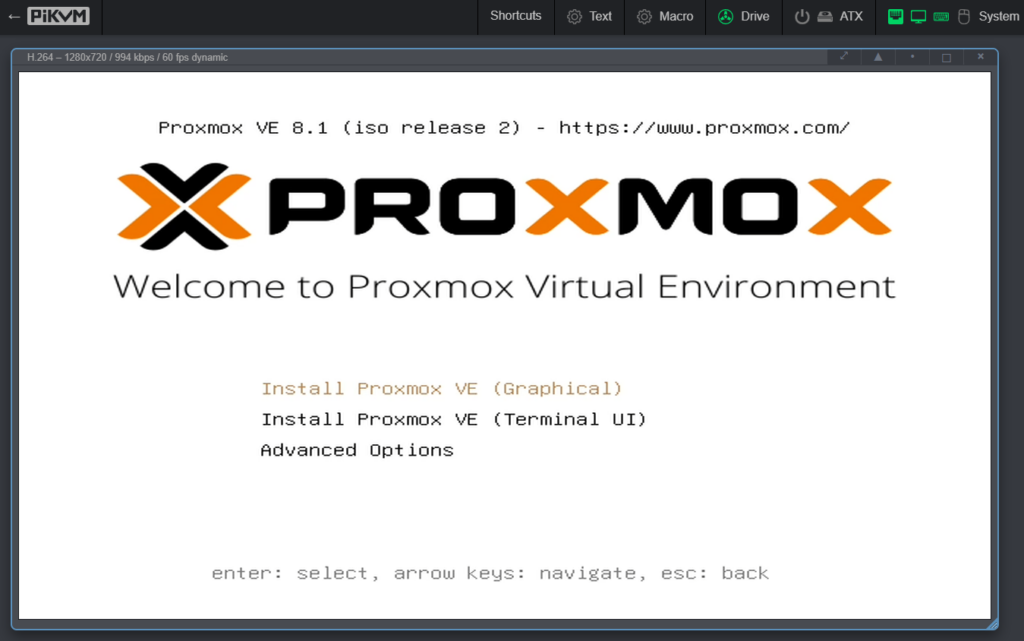
And we’re straight into the Proxmox installer, yay!
Installing is pretty much Next, Next, Finish (provided you are happy to wipe whatever disk is in there), so I won’t show you every step:


There’s a clue in the network configuration that we’ll pick up on later … the on-board NIC is shown as r8169.
Just look at all this lovely stuff you get with Proxmox:

Now let’s take a quick look at power consumption:

The whole system is idling around 9W measured at the wall. That’s not quite in the realm of the J4125 but it’s pretty good for any PC!
In a couple of minutes the installer completes and Proxmox reboots:

And there we are, Proxmox up and running!
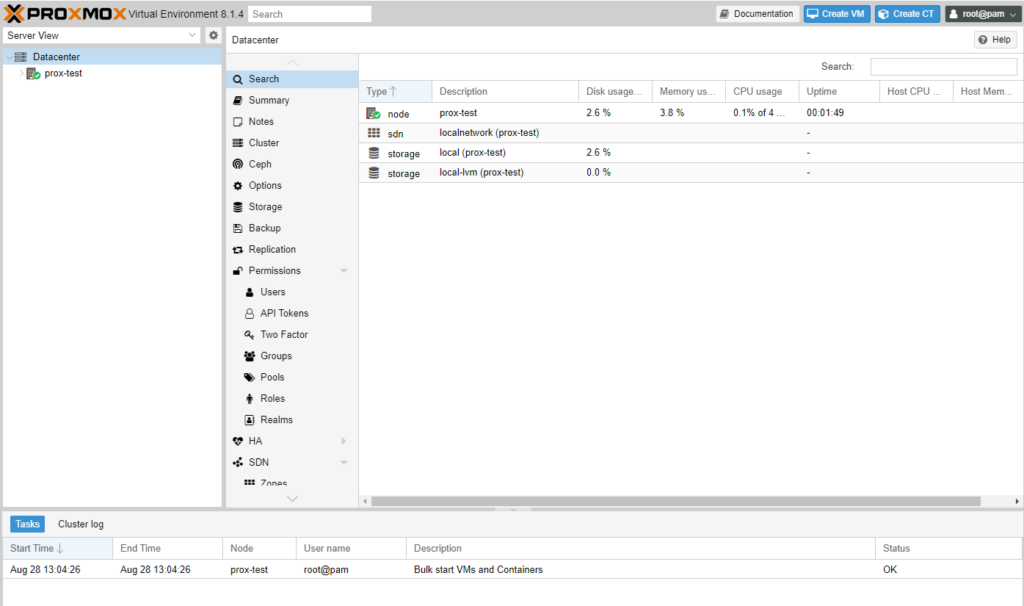
Now I mentioned earlier something about the onboard NIC … the N100DC-ITX has an onboard Realtek RTL 8111H, first thing I would recommend is to jump on my other blog post about that, because the default driver that Debian uses works but can cause issues, and you will tear your hair out trying to fix it if you run into that!
Another slight “annoyance” if you’re using Proxmox just for homelab and you don’t have a subscription (yet) is that by default aptitude is set up to use the enterprise package repositories, which won’t work without a subscription key. You can fix this quickly like this:
sed -e '/deb/ s/^#*/#/' -i /etc/apt/sources.list.d/pve-enterprise.list
sed -e '/deb/ s/^#*/#/' -i /etc/apt/sources.list.d/ceph.list
echo 'deb http://download.proxmox.com/debian/pve bookworm pve-no-subscription' | tee -a /etc/apt/sources.list
echo 'deb http://download.proxmox.com/debian/ceph-reef bookworm no-subscription' | tee -a /etc/apt/sources.list.d/ceph.listNow you should be able to update without errors:
root@prox-test:~# apt update
Hit:1 http://security.debian.org bookworm-security InRelease
Hit:2 http://ftp.uk.debian.org/debian bookworm InRelease
Hit:3 http://ftp.uk.debian.org/debian bookworm-updates InRelease
Get:4 http://download.proxmox.com/debian/pve bookworm InRelease [2,768 B]
Get:5 http://download.proxmox.com/debian/ceph-reef bookworm InRelease [2,738 B]
Get:6 http://download.proxmox.com/debian/pve bookworm/pve-no-subscription amd64 Packages [336 kB]
Get:7 http://download.proxmox.com/debian/ceph-reef bookworm/no-subscription amd64 Packages [42.0 kB]
Fetched 384 kB in 2s (242 kB/s)
Reading package lists... Done
Building dependency tree... Done
Reading state information... Done
146 packages can be upgraded. Run 'apt list --upgradable' to see them.
root@prox-test:~# apt upgrade
Reading package lists... Done
Building dependency tree... Done
Reading state information... Done
Calculating upgrade... Done
The following NEW packages will be installed:
proxmox-firewall proxmox-kernel-6.5.13-6-pve-signed proxmox-kernel-6.8 proxmox-kernel-6.8.12-1-pve-signed
pve-esxi-import-tools python3-pyvmomi
The following packages will be upgraded:
base-files bash bind9-dnsutils bind9-host bind9-libs bsdextrautils bsdutils ceph-common ceph-fuse curl
distro-info-data eject fdisk gnutls-bin grub-common grub-efi-amd64 grub-efi-amd64-bin grub-efi-amd64-signed
grub-pc-bin grub2-common ifupdown2 krb5-locales ksm-control-daemon less libarchive13 libblkid1 libc-bin libc-l10n
libc6 libcephfs2 libcryptsetup12 libcurl3-gnutls libcurl4 libfdisk1 libfreetype6 libglib2.0-0 libgnutls-dane0
libgnutls30 libgnutlsxx30 libgssapi-krb5-2 libgstreamer-plugins-base1.0-0 libk5crypto3 libkrb5-3 libkrb5support0
libmount1 libnss-systemd libnvpair3linux libopeniscsiusr libpam-systemd libproxmox-acme-perl
libproxmox-acme-plugins libpve-access-control libpve-apiclient-perl libpve-cluster-api-perl libpve-cluster-perl
libpve-common-perl libpve-guest-common-perl libpve-http-server-perl libpve-network-perl libpve-notify-perl
libpve-rs-perl libpve-storage-perl libpython3.11-minimal libpython3.11-stdlib libqt5core5a libqt5dbus5
libqt5network5 librados2 libradosstriper1 librbd1 librgw2 libseccomp2 libsmartcols1 libssl3 libsystemd-shared
libsystemd0 libudev1 libunbound8 libuuid1 libuutil3linux libuv1 libzfs4linux libzpool5linux locales lxc-pve lxcfs
mount nano open-iscsi openssh-client openssh-server openssh-sftp-server openssl postfix proxmox-backup-client
proxmox-backup-file-restore proxmox-backup-restore-image proxmox-default-kernel proxmox-kernel-6.5
proxmox-offline-mirror-docs proxmox-offline-mirror-helper proxmox-termproxy proxmox-ve proxmox-widget-toolkit
pve-cluster pve-container pve-docs pve-edk2-firmware pve-edk2-firmware-legacy pve-edk2-firmware-ovmf pve-firewall
pve-firmware pve-ha-manager pve-i18n pve-manager pve-qemu-kvm python3-ceph-argparse python3-ceph-common
python3-cephfs python3-idna python3-rados python3-rbd python3-rgw python3.11 python3.11-minimal qemu-server
shim-helpers-amd64-signed shim-signed shim-signed-common shim-unsigned spl ssh systemd systemd-boot
systemd-boot-efi systemd-sysv tar tzdata udev usbutils usrmerge util-linux util-linux-extra zfs-initramfs zfs-zed
zfsutils-linux
146 upgraded, 6 newly installed, 0 to remove and 0 not upgraded.
Need to get 519 MB of archives.
After this operation, 1,205 MB of additional disk space will be used.
Do you want to continue? [Y/n]If you start really using Proxmox I fully recommend buying a subscription. The community subscription is really very inexpensive and helps to support your access to an enterprise quality product, and also removes the annoying nag on the front page! If you do, remember to switch back to the enterprise repositories for stable updates.
That’s it for this post, hope you enjoyed!
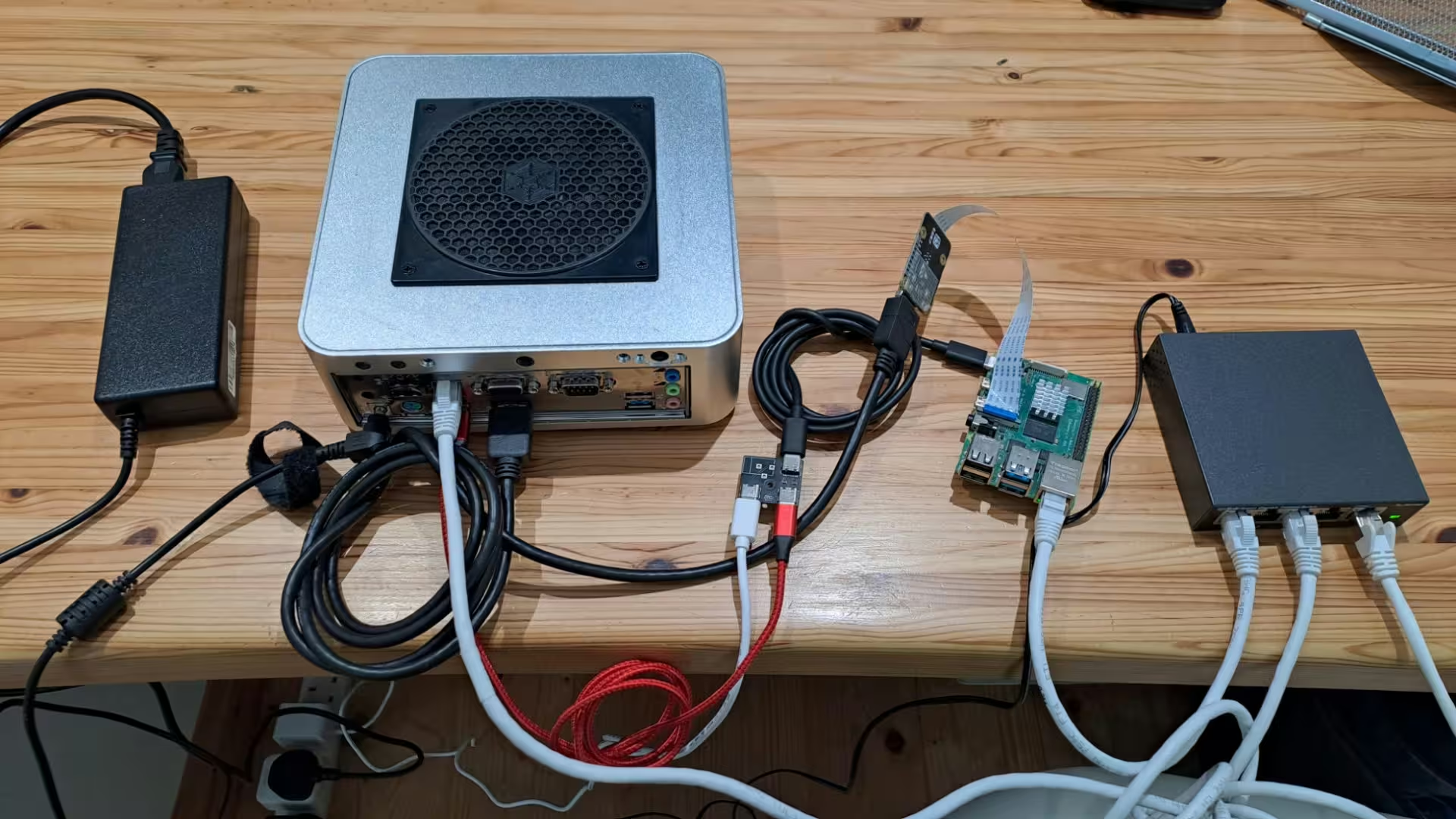
Leave a Reply